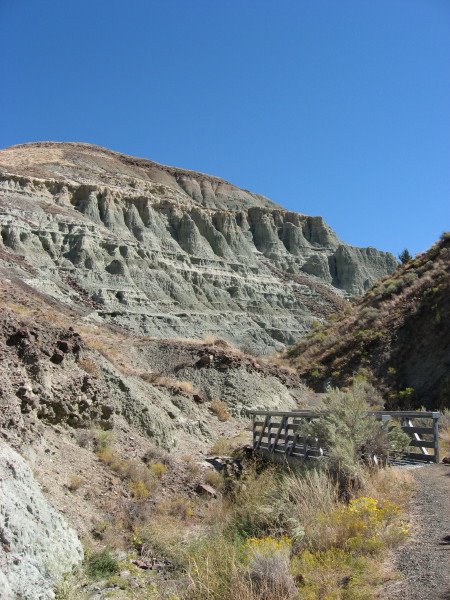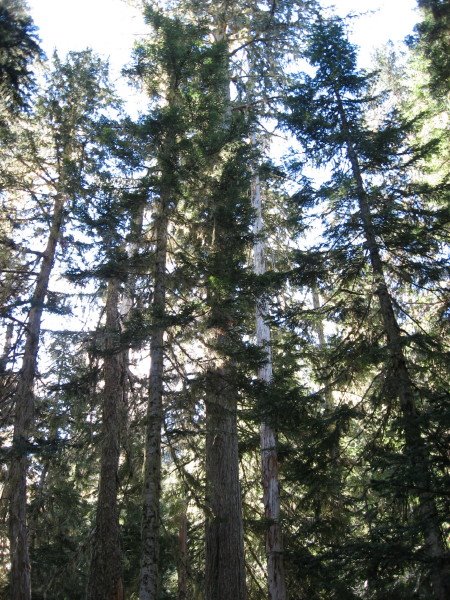![]()
![]()
DonorsChoose Update
Earth Science Week has been a good week for bringing earth science to school kids. The Highly Allochthonous drive has raised $657 so far from 9 donors and touched the lives of 421 students. Thanks to all who have given and spread the word.
But there’s no time to rest on our laurels, because there are many many more projects out there in desperate need of our help. Today is the very last day to help South Carolina elementary school kids turn into Weather Detectives. They need another $261 to be given by the end of the day. Can you help them reach their goal? (Note: If you give money to a project and it does not end up being completely funded, you’ll be allowed to reallocate your donation to another project of your choice.)
If none of the projects on our challenge page strike your fancy, or you want to share the love even further, please look at the projects that geoblogger and tweeter Maitri Erwin is supporting through her giving page. There are also some great projects on “The Rocks Know” giving page, but I’m not sure which blogger deserves the shout-out for setting up a challenge. If it’s you, please let me know. Of course, if you are all wet, you can support our ocean blogging colleagues through Ocean Bloggers United for Education or The Gam Classroom Initiative.
And now on to the linky goodness…
Volcanoes
- Spectacular! New aerial photos of the Reunion eruption
http://www.photoslareunion.com/Erupt151010-01/index.htm
(via @volcanotweet, @panoramareuni) - Geothermal map of US in Google Earth. Note difference between W (Basin & Range) & E/Central. )
http://www.google.org/egs/
(via @tpenews) - @UncoveredEarth has a new post on “An Oregon Town Goes Geothermal”
http://wp.me/pCNvt-1X
Earthquakes
- Unrecognised tsunami risk from strike-slip faults? (due to triggered landslides)
http://green.blogs.nytimes.com/2010/10/12/for-tsunamis-a-new-tectonic-suspect/?src=twt&twt=nytimesscience - 5 Questions for Geophysicist Eric Calais on the Newly Discovered Fault in Haiti | Britannica Blog
http://www.britannica.com/blogs/2010/10/5-questions-for-geophysicist-eric-calais-on-the-newly-discovered-fault-in-haiti/
(Paleo)climate
- Warming climate could trigger collapse landslides of (currently) glaciated volcanic summits
http://www.newscientist.com/article/mg20827825.100-a-warming-world-could-leave-cities-flattened.html - Old Weather – interesting new citizen science project, digitising weather conditions from old Royal Navy logbooks
http://www.oldweather.org/ - Yale Univ. survey of Americans’ Knowledge of Climate Change. 52% of Americans would get an “F”, but it could be worse.
http://environment.yale.edu/climate/publications/knowledge-of-climate-change
(via @Geo_House, @argillic)
Water
- Kevin Zelnio writes about “The Disease of Plastic Water Bottles” at Deep Sea News. Anne thinks he is right on.
http://nblo.gs/9bN7K - Water cycle seems out of whack. (Yes, that’s the actual headline. Anne thinks the PNAS paper it is based on might use slightly different language.)
http://www.msnbc.msn.com/id/39508745/ns/us_news-environment/
(via @waterwired, @MTHellfire) - 7 Cities About to Sink The #1 city is no where near the ocean.
http://travel.yahoo.com/p-interests-35998698
(via @kzelnio) - Understanding the Crucial Connection Between Water and Energy
http://blogs.ei.columbia.edu/2010/10/15/understanding-the-crucial-connection-between-water-and-energy/
(via @Geoblogfeed) - One more plug for Anne’s guest post at AGU’s Geospace blog on how population trends, not climate, causing increased flood fatalities in Africa
http://blog.agu.org/geospace/2010/10/15/population-floods-africa/
Environmental
- Demographic effects on growth of CO2 emissions: aging populations decreases, urbanisation increases
http://www.bbc.co.uk/go/rss/int/news/-/news/science-environment-11514248 - Good satellite image of toxic sludge spill in Hungary
http://earthobservatory.nasa.gov/IOTD/view.php?id=46360
(via @rivrchik, @guardianeco) - Ed Yong writes about how an invasive shrub leads to human disease via insanely complicated chain of ecological events
http://blogs.discovermagazine.com/notrocketscience/2010/10/11/invasive-shrub-increases-risk-of-human-disease-via-ticks-deer-and-bacteria/ - Michael Welland informs & delights us again in a fun post on ‘glass beaches’!
http://throughthesandglass.typepad.com/through_the_sandglass/2010/10/sunday-sand-glass-beaches.html
(via @NotanEster)
Fossils
- Adding this to must see list: Andrew Alden shares his current favorite fossil – the Gilboa Forest:
http://geology.about.com/b/2010/10/14/my-current-favorite-fossil-the-gilboa-forest.htm - Take a look at the "Fossils Through Time" poster, great for classrooms
http://store.usgs.gov/pubsordernow.jsp?g_matnr=16564
(via @USGSstore)
Planets
- Great article on the increasingly intense debate over whether Mars or Titan geologically active
http://www.scientificamerican.com/blog/post.cfm?id=are-mars-and-titan-geologically-dea-2010-10-09
General Geology
- CBC’s Geoworld site has launched. “Take a trip through time and around the world to discover its geology.” (Note that Chris is one of the featured geotweeters on this slick site.)
http://www.cbc.ca/documentaries/natureofthings/geologicjourney2/
(via @volcanotweet) - I hope some geologists got a look at this 60 km tunnel through the Alps before they cased it in concrete…
http://www.bbc.co.uk/news/world-europe-11548845
(as it turns out, they did: fellow geotweeter @ugrandite pointed me to the following:
http://sp.lyellcollection.org/cgi/content/abstract/324/1/111
http://geology.gsapubs.org/content/38/6/487.abstract
http://dx.doi.org/10.1016/j.gca.2010.01.030) - Beautiful, artistic metamorphic facies diagram
http://www.geo.uni-potsdam.de/mitarbeiter/Bousquet/papers/metalps/img/Fig3_c.png
(via @callanbentley) - neat follow-up to Andes-glacial Nature paper (which argued that ice sheets can protect mountains from erosion, rather than speeding it up): Super cool image of mountains below Antarctic ice:
http://www.wired.com/wiredscience/2010/10/gamburtsev-mountains
(via @ugrandite, @callanbentley) - Beautiful rocks, drainages & dinosaurs too : Grand Staircase-Escalante National Monument, Utah
http://earthobservatory.nasa.gov/IOTD/view.php?id=46365
(via @NASA_EO)
Interesting Miscellaney
- Marvelous maps of Europe as seen by different groups:
http://bigthink.com/ideas/243
(via @stephenfry) - Paper on “paths to statistical fluency for ecologists.” Their recommendation: Require calculatus and then use calc-based stats in env sci courses
http://www.esajournals.org/doi/abs/10.1890/080209?journalCode=fron
(via @JacquelynGill) - Last but certainly not least: Ed Yong, taking blogging to new heights, wins 2010 National Academies Science Communication Award!
http://blogs.discovermagazine.com/notrocketscience/2010/10/14/i%E2%80%99d-like-to-thank-the-academies/
(via @daniel_lende)







Nice plan for content warnings on Mastodon and the Fediverse. Now you need a Mastodon/Fediverse button on this blog.